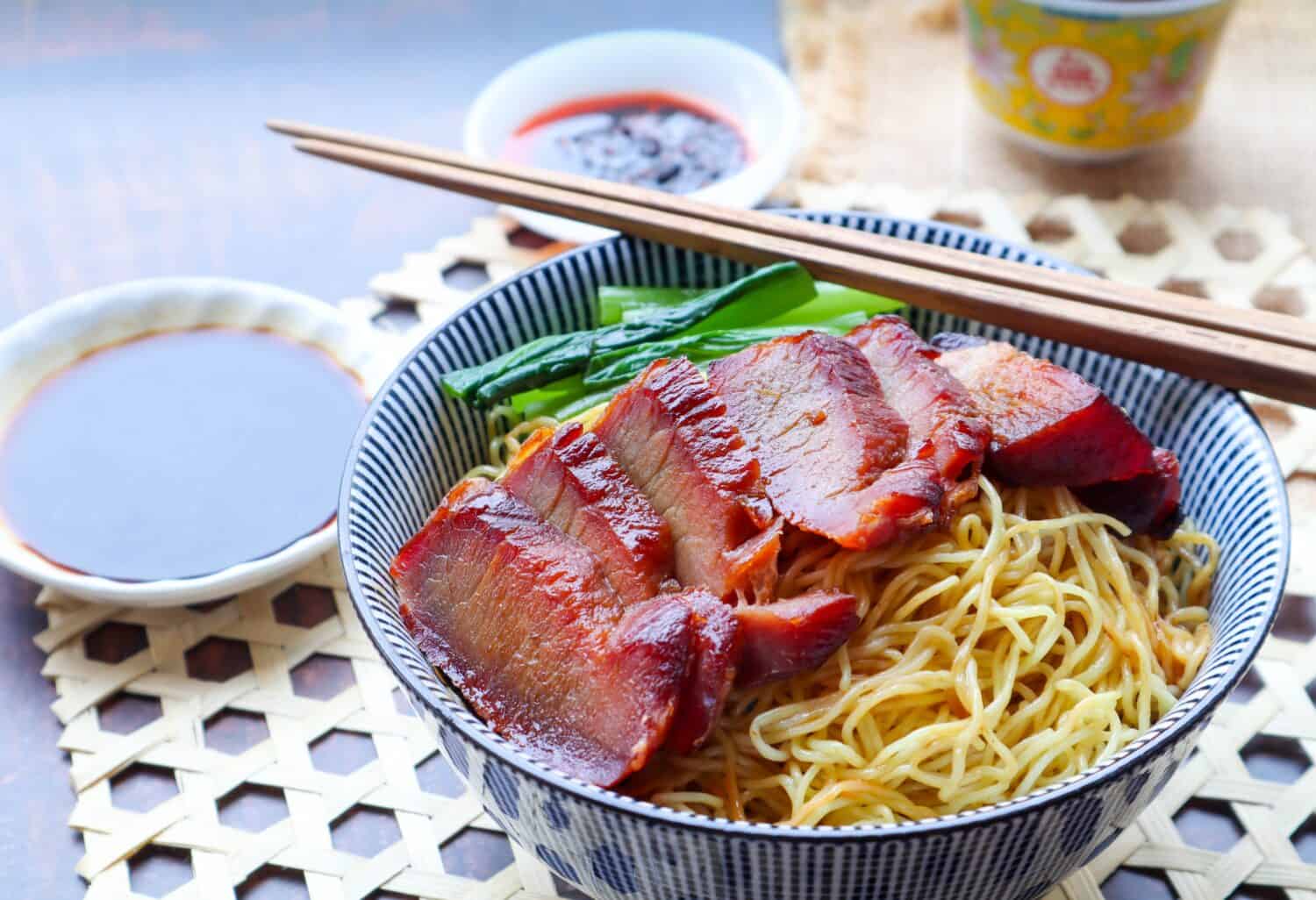To broadly generalize that any international cuisine is “unhealthy” isn’t entirely fair. After all, every region has its own range of dishes and flavor profiles. When it comes to Chinese food, however, that range really extends from one end of the spectrum to another. It's much like comparing apples and oranges … or, in this case, chow mein and Peking duck.
Considering the health advantages and disadvantages of Chinese food is a bit of a rabbit hole that’s easy to get lost in, given that there are so many different dishes, sauces, cooking methods, and preparation styles. Moreover, there’s a vast difference between the health impact of Westernized Chinese food (which is typically sauce-heavy, contains more sugar, and often has deep-fried components) versus traditional Chinese food, which tends to rely more on steamed vegetables and lean proteins.
Nevertheless, we’re doing a deep dive into the science behind Chinese food’s impact on our health — what dishes lend themselves to healthier substitutes, what makes North American Chinese food less healthy relative to authentic dishes, how MSG factors into the argument, and what science says about the long-term effects of indulging in all of it!
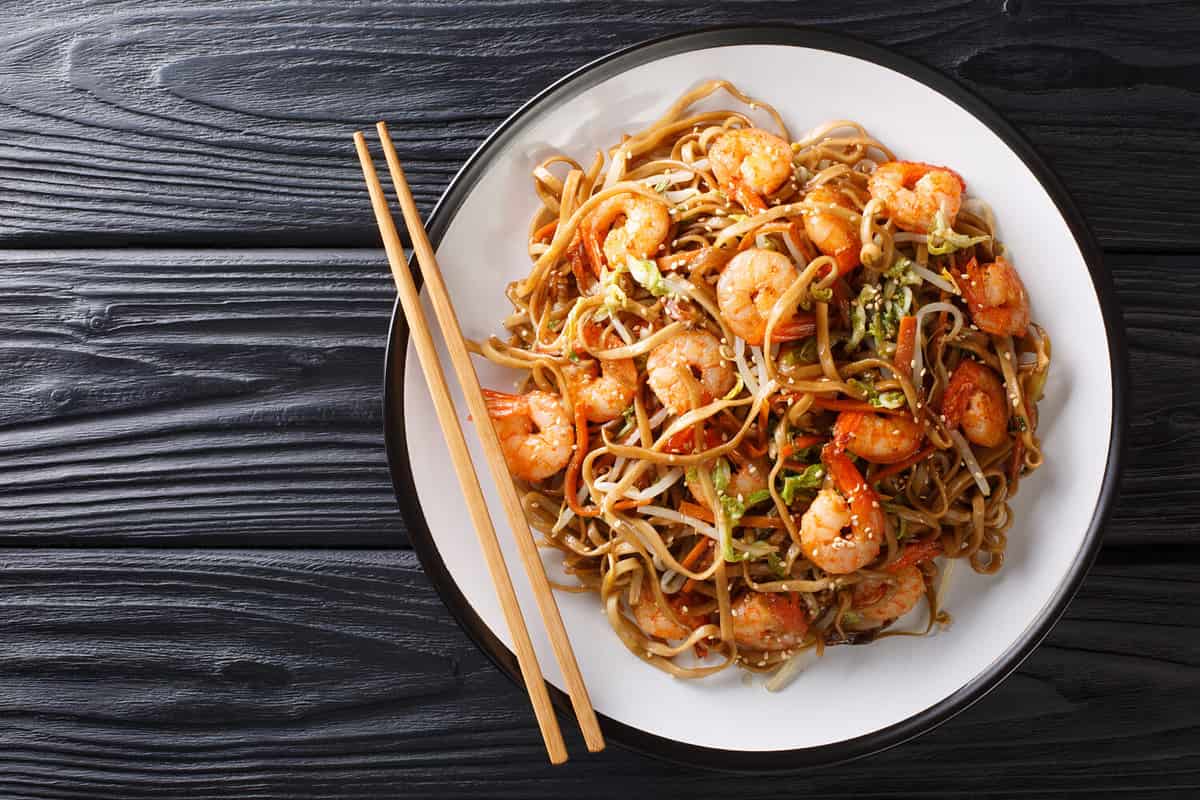
©AS Foodstudio/Shutterstock.com
What Dishes are Typically Found in Chinese Food, and What are the Most Common Ingredients?
It would obviously be impossible to list every Chinese dish in existence — a major undertaking, indeed. But the point of this is really to give a general idea of the most popular go-tos. As an example, here are some of the most frequently ordered menu items at most Chinese restaurants in America:
- Won Ton Soup
- Potstickers
- Egg Rolls
- Crab Rangoons
- Fried Rice
- Sweet and Sour Chicken
- Orange Chicken
- Sesame Chicken
- General Tso's Chicken
- Chop Suey
- Lo Mein
- Kung Pao Chicken
Additionally, here are some of the healthier options when it comes to ordering Chinese food:
- Steamed Dumplings
- Hot and Sour Soup
- Egg Drop Soup
- Chicken Lettuce Wraps
- Chicken and Broccoli (also works with tofu!)
- Kung Pao Chicken
- Chinese Eggplant with Garlic Sauce
- Moo Goo Gai Pan
- Shrimp and Vegetables with Black Bean Sauce
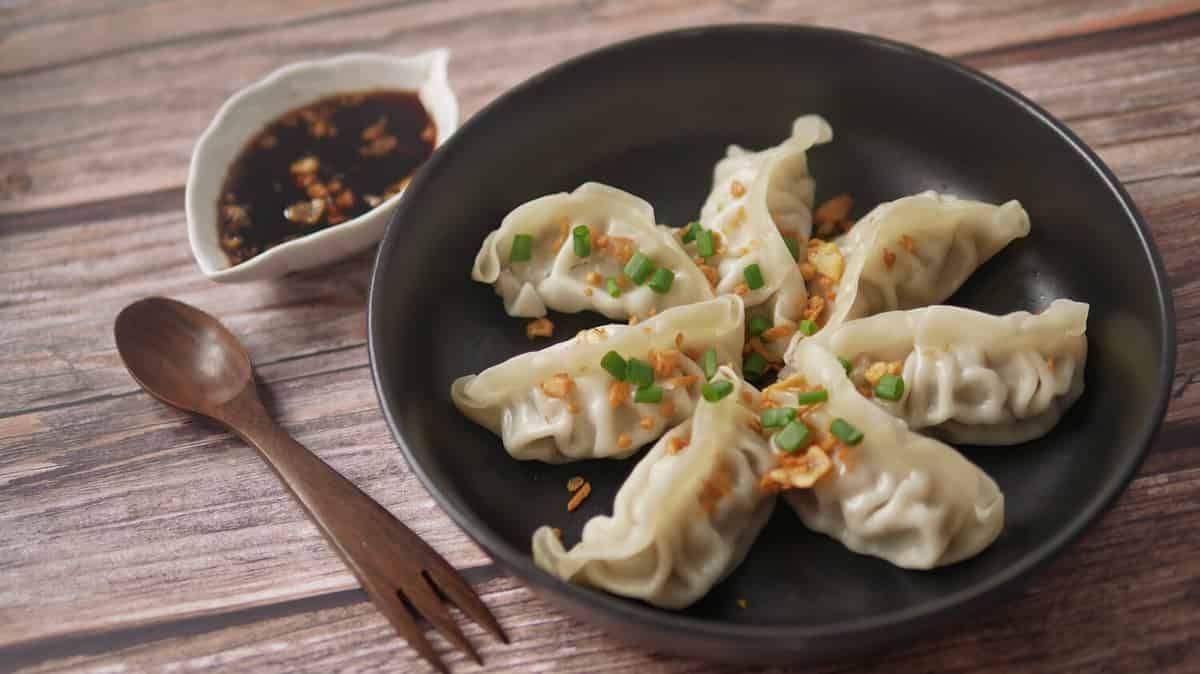
©joojoob27/Shutterstock.com
What are the Differences Between Americanized Chinese Food and Authentic Chinese Food?
We’re going to get to the bottom line in a moment, but first things first: a little history lesson. Chinese food essentially came to America in the 1800s when immigrants flocked to California during the Gold Rush. Since many of the first immigrants were from the Cantonese region of China, so, too, were many of the recipes that came with them. Over time, however, the restaurants morphed their menu repertoires to adhere to the tastes of their customers. This began a new wave of dishes that had never really existed before, with sweeter sauces, deep-fried components, and ingredients more readily found or produced in the States.
With that in mind, it’s no surprise that there are some major differences between traditional Chinese food and what you might commonly find in an American Chinese restaurant. Here are a few of those differences:
- Meat vs. Vegetables: Generally speaking, Westernized Chinese food showcases meat as the main affair. In China, however, vegetables, soybeans, tofu, noodles, and rice are typically the stars of the show.
- Ingredients: Many of the main elements In Americanized Chinese food aren't common in authentic dishes — this includes vegetables such as onions, carrots, and broccoli, as well as dairy products (such as in Crab Rangoons, which are filled with a cream cheese mixture). Additionally, the Chinese food served in China primarily relies on fresh vegetables and proteins — rarely on canned or frozen ingredients.
- Portion Sizes: As with many cuisines outside of North America, authentic Chinese food tends to offer smaller portions than those in the United States.
- Cooking Preparation: In China, foods are typically prepared using traditional methods such as stewing, braising, steaming, and fermenting. In American-Chinese food, dishes are often prepared in woks or deep fryers.
- Flavors: Westernized Chinese food leans toward sweeter and heavier sauces, with more sugar and soy sauce than traditional Chinese food. In China, the food is much less sweet and tends to be significantly spicier.
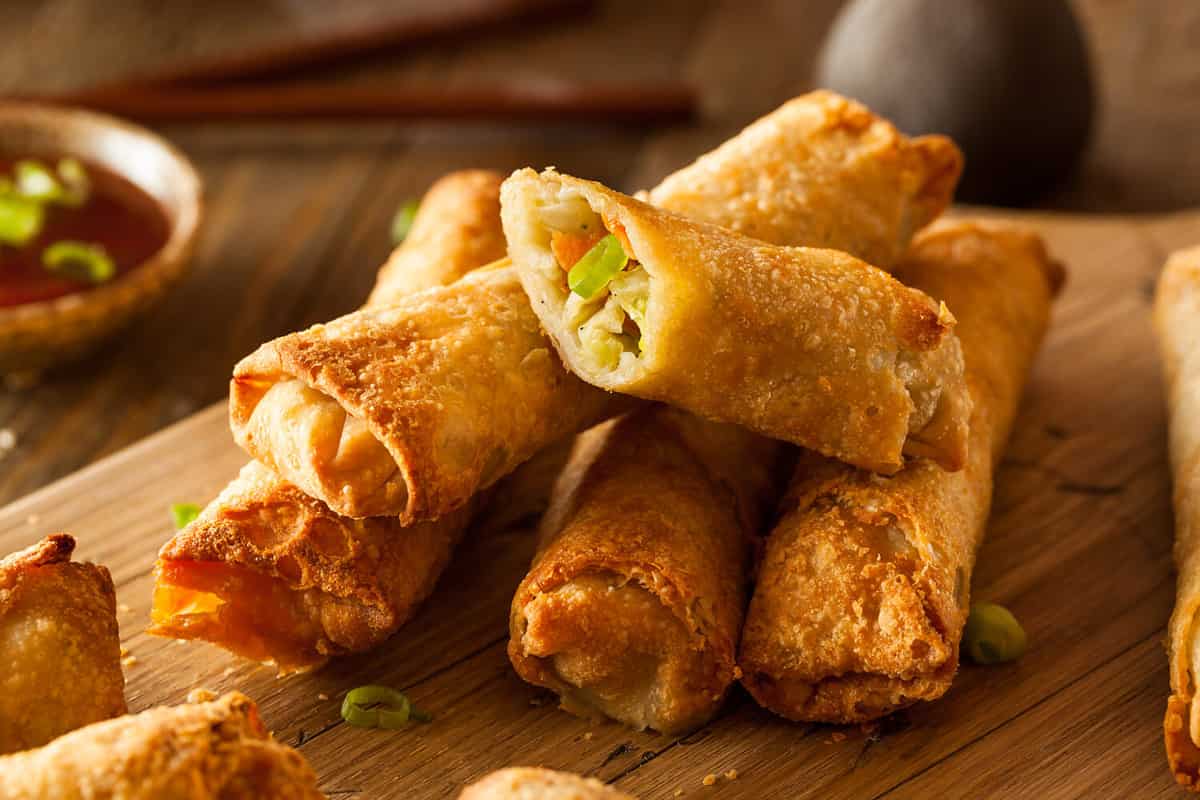
©Brent Hofacker/Shutterstock.com
What are the Health Benefits of Chinese Food?
Now that we've established a number of disadvantages, let's take a look at the health benefits of Chinese food. Again, we'll concentrate on the Americanized version since it's more prevalent outside of Asia.
While Westernized Chinese food may offer fewer health benefits than traditional Chinese options, it's also important to note that there are healthier substitutes for many dishes that can offer up a slightly less oily, sugary, or salty alternative. One of the most common substitutes is ordering brown rice rather than white. However, there are plenty of other exchanges you can make, too. Here are a few you may wish to consider:
- Instead of Won Ton Soup, consider Hot and Sour Soup
- Instead of Fried Dumplings, consider Steamed Buns or Dumplings
- Instead of Sesame Chicken, consider Chicken with Broccoli or Chicken with Green Peppers
- Instead of fortune cookies, consider orange slices (P.S. Fun fact, fortune cookies didn't even originate in China. Moreover, you won't find restaurants in China serving them after a meal!)
Along with exchanging heavier dishes for lighter versions, you can also lean into options such as steamed seafood with vegetables, which offers protein, omega-3 fatty acids, and fiber all in one dish. You should also consider an entrée that's ginger-heavy. Ginger is a fantastic way to reduce body inflammation! Not to be forgotten, Chinese food also offers fresh salads that we don't often give enough credit to. Options like cucumber and daikon radish salad are refreshing, light, and full of nutrients.
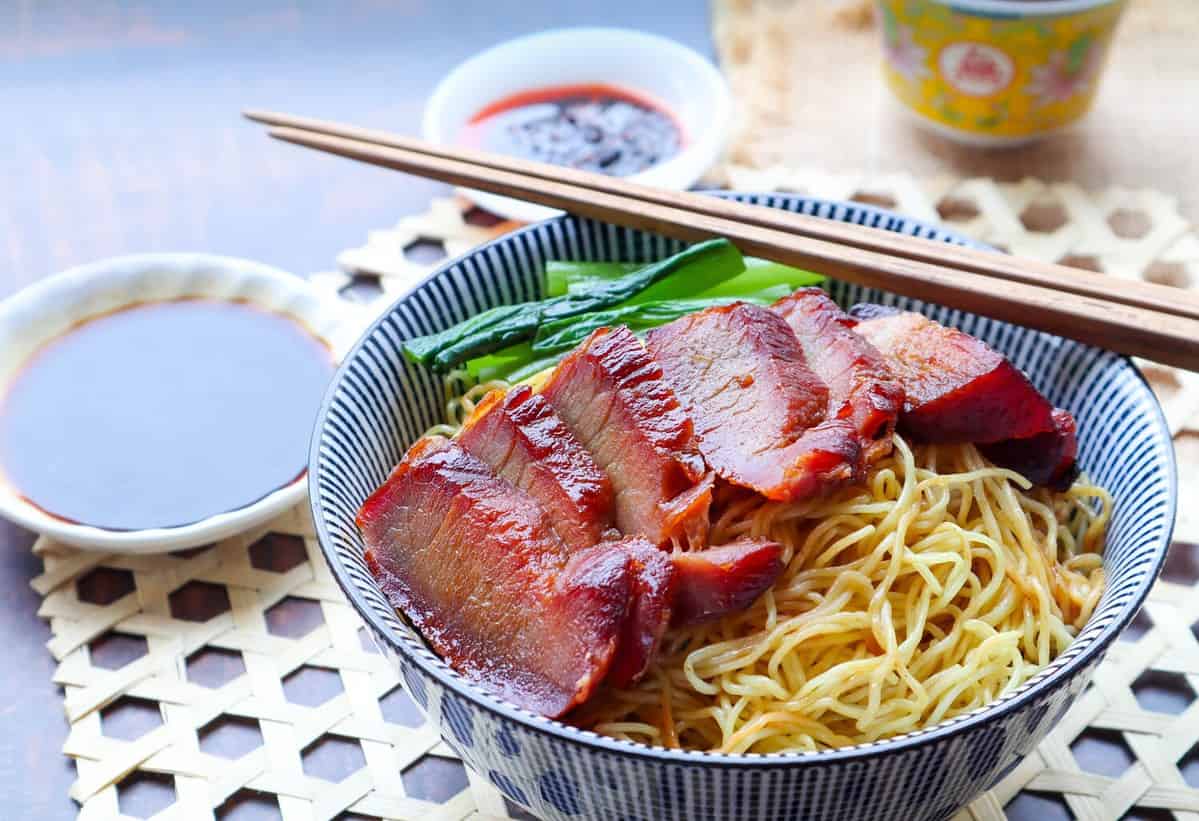
©Be Saowaluck/Shutterstock.com
What are the Health Disadvantages of Chinese Food?
For argument's sake, we're going to focus on Americanized Chinese food here since there's a greater disparity among its dishes when it comes to health impact. Though undoubtedly tasty, Americanized Chinese food often suffers from a great deal of processed additives. Not to mention, many of the most popular dishes are chock full of oil, sugar, and salt. General Tso's Chicken, for example, is notoriously high in calories, fat, and sodium. One survey in the United Kingdom even found that some Chinese dishes contain more salt than five McDonald’s Big Macs. FIVE! It's a pretty staggering statistic.
Additionally, some dishes pair what would typically be a lean protein, like fish or pork, with sugar-laden sauces. This is true for dishes like Sweet and Sour Shrimp, Sesame Chicken, and Mongolian Beef. Other dishes, such as Crab Rangoons or Egg Rolls, take healthy items and dredge them in deep-fried goodness. Delicious? Yes. Healthy? Not quite. The bottom line is that the cooking preparation tends to make all the difference.
The fact is, Chinese people celebrate a traditionally plant-based diet with the occasional meat thrown in, along with copious amounts of tea — and that has contributed toward better overall health. In general, rural Chinese people have decreased rates of heart disease, diabetes, and obesity relative to Americans.
What is MSG, and Why is it Controversial?
While we're on the subject of Chinese food, it's worth mentioning the highly debated topic of MSG. If you're unfamiliar with what it is, MSG (Monosodium Glutamate) is a food additive used to enhance flavor in everything from deli meats and soups to … you guessed it, Chinese food. It's best known for infusing “umami” into dishes, which is a flavor that has joined salty, bitter, sweet, and sour as the fifth taste our palates recognize.
Most notably, however, MSG developed a stigma decades ago for causing nausea, chest pain, bloating, brain fog, migraines, and a variety of other uncomfortable symptoms. It even has its own designation: MSG Symptom Complex. While the U.S. Food and Drug Administration (FDA) classifies MSG as being “generally recognized as safe,” there are those who possess a greater sensitivity to it. With that in mind, any foods that contain MSG must be labeled as such, according to the FDA.
Interestingly, MSG has had a recent surge of appreciation within the culinary industry — studies show its reputation is undergoing a revitalization of sorts. The reality is that consuming enough MSG to cause any major side effects is pretty unlikely for most people. Recent scientific research shows that MSG is harmless in moderation. Because of this fact, many chefs are touting the glory of its flavor profile and usage. Additionally, MSG can lower the amount of salt in a dish since it is a flavor-enhancing additive. This equates to a more in-depth flavor profile without the egregious amount of sodium.
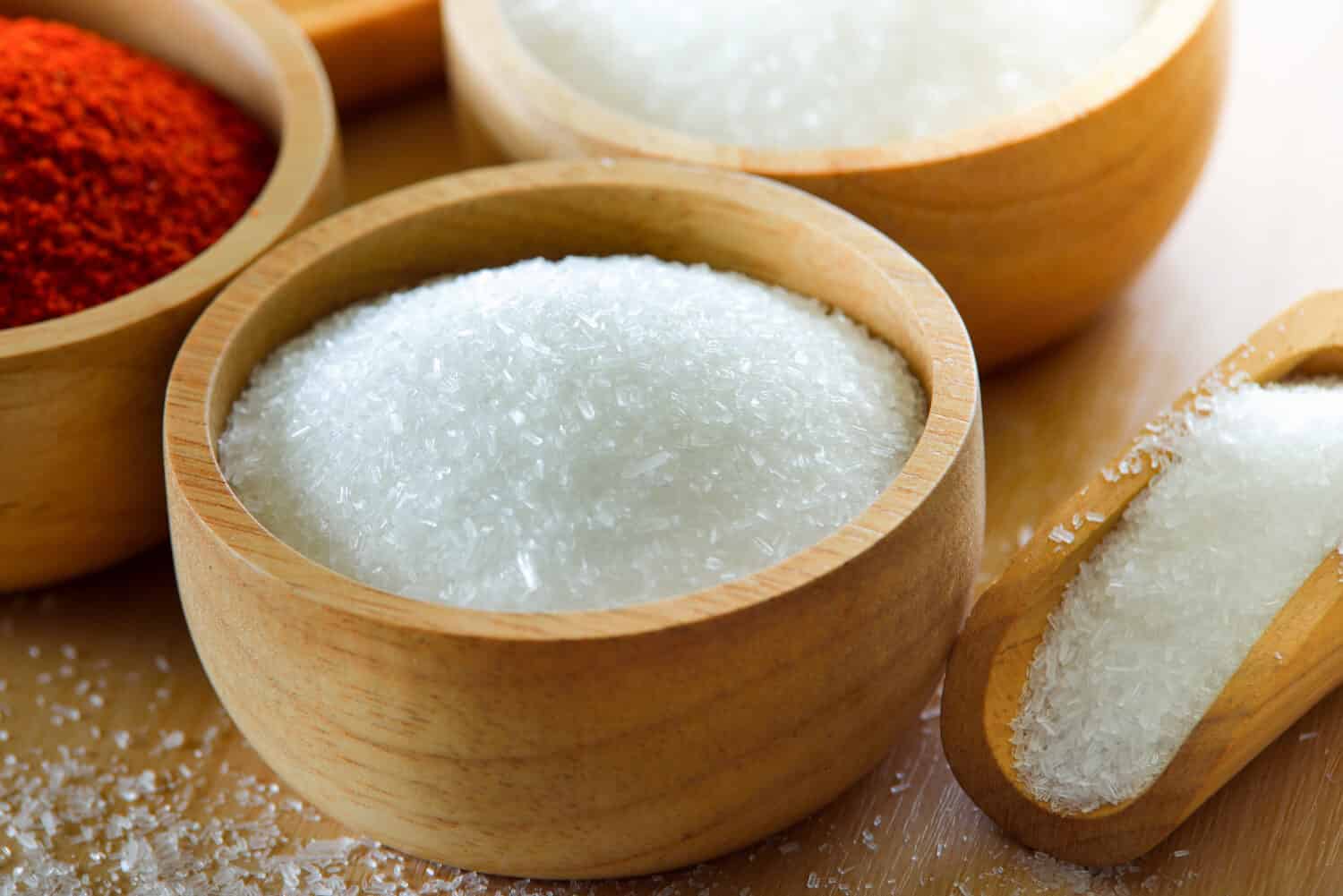
©SOMMAI/Shutterstock.com
Important Takeaways
- Authentic Chinese food and Americanized Chinese food are vastly different, which makes for vastly different health benefits and disadvantages.
- Americanized Chinese food tends to rely heavily on processed additives and ingredients such as oil, sugar, salt, and MSG, while authentic Chinese food leans toward vegetables, soybeans, tofu, rice, and noodles.
- MSG is a flavor-enhancing additive that has endured an unfortunate reputation over the years. It has been suggested that it causes a number of ailments — from nausea and headaches to heart palpitations. However, it has recently started experiencing a surge of appreciation from professional chefs, and the U.S. Food and Drug Administration (FDA) generally classifies MSG as safe in moderation.
- There are plenty of healthy substitutes for the more salty, sugary, and heavy Chinese food dishes. Additionally, swapping out white rice for brown rice or choosing steamed dishes over their fried counterparts can make all the difference when it comes to healthier options.
Up Next:
- Chinese Take-Out-Style Chicken and Broccoli Recipe
- How to Cook Bok Choy Perfectly: Two Unique Ways to Approach It
- MSG vs. Salt: Chemical Differences, Popular Uses, and Health Considerations
The image featured at the top of this post is ©Be Saowaluck/Shutterstock.com.
